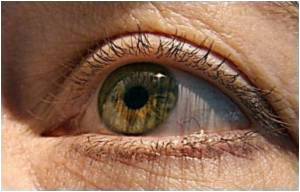
Raman spectroscopy enabled the researchers to distinguish the methicillin, sensitive S. aureus (MSSA) from methicillin resistant S. aureus (MRSA) with 90.2 percent accuracy. They also could tell the difference between MRSA and its more stubborn form, RVS-MRSA, with 96.3 percent accuracy. The S. aureus profiles were then entered into a statistical program to create a preformed model of the Raman spectra. When the surgeons tested new spectra, the program was 98 percent accurate in classifying the bacteria as one of the four strains.
Based on these results, the researchers believe the Raman spectroscopy technique could lead to the development of faster, more effective treatment for people with Staph infections. Currently, emergency room patients may have to wait about six hours before diagnostic tests can identify a Staph infection and another 24 to 72 hours to determine which antibiotics could treat it, said Dr. Spencer. In the meantime, "you treat these very sick patients with the antibiotics you have and hope that will control it. The overuse of such antibiotics has been blamed for the rise of antibiotic resistance. This scenario could lead to a situation where the bacterial infection can''t be treated. Our findings suggest that Raman spectroscopy can identify the infection earlier and save money by treating the infection quicker instead of hoping an antibiotic is working and then switching when it doesn''t," Dr. Spencer explained.
The S. aureus profiles generated by Raman spectroscopy are among dozens of pathogen profiles being added to a database of other bacteria, viruses, malignant tumors, and fungi. "Our goal is to map out as complete a number of pathogens and pathogenic organisms as we can, starting with the most pertinent ones first and, as we get further into it, the ones you don''t see very often," Dr. Spencer said. In early 2012, Dr. Spencer and her team expect to launch a clinical trial comparing Raman spectroscopy with traditional identification techniques with funding from the National Institutes of Health and Wayne State University.
Researchers are simultaneously developing a technology to integrate the pathogen database and the Raman spectroscopy technique into a hand-held device that would cut turnaround times for diagnostic test results from several hours to about 10 minutes. Currently, Raman spectroscopy is deployed through costly table-top devices and portable robots, said Gregory Auner, PhD, a professor in the department of electrical and computer engineering and founder and director of the Smart Sensors and Integrated Microsystems Program at Wayne State University.
"We are miniaturizing it even further, down to the size of two or three cell phones," said Dr. Auner, who has led the hand-held device''s development for the last five years with grants from the U.S. Department of Defense and the National Institutes of Health. "Also, the price would be two orders of magnitude less, in the thousands of dollars," he concluded.
Advertisement
Source-Newswise









